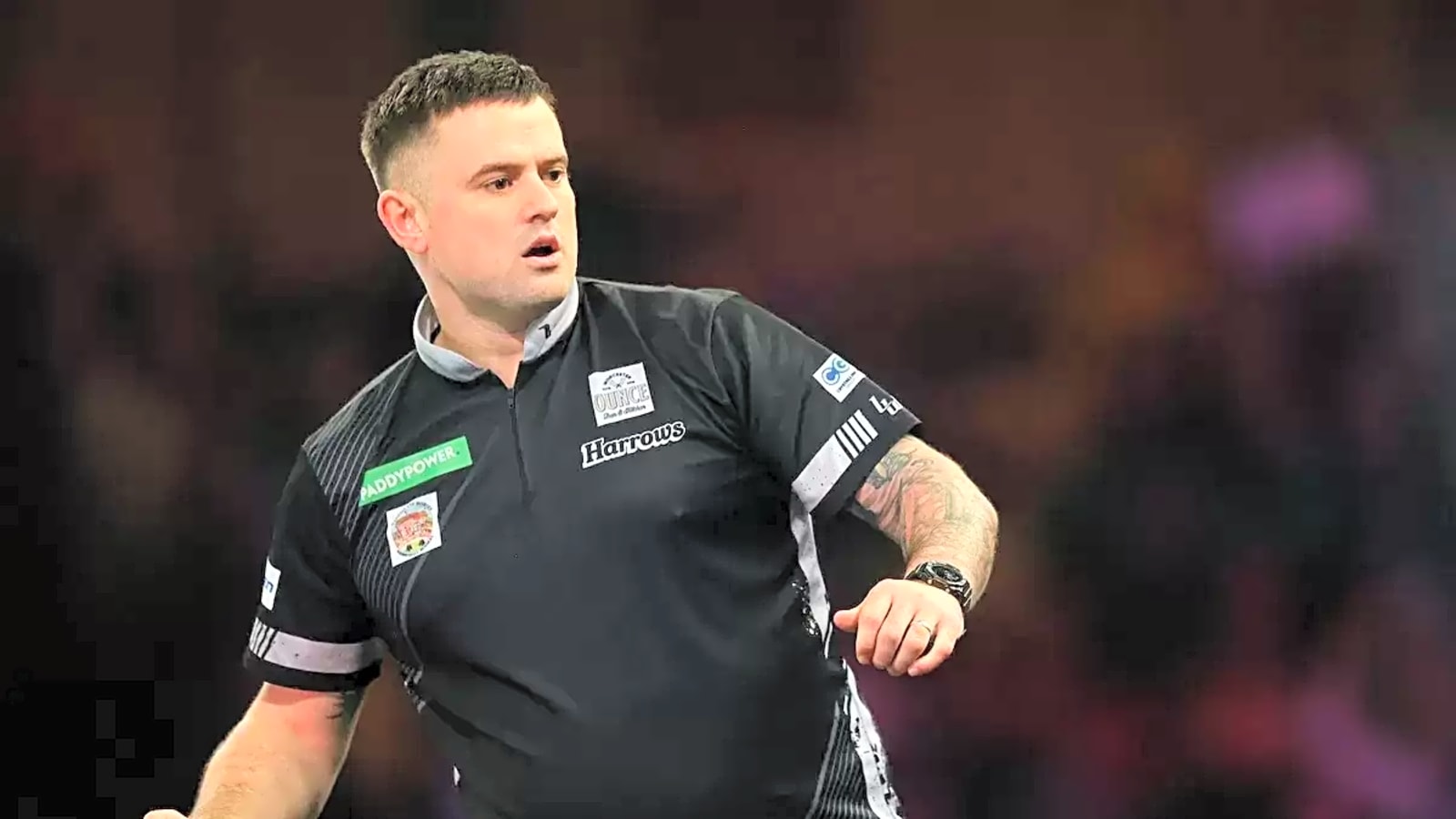
In his latest column, PDC analyst Christopher Kempf dives deep into 2025 statistics to examine how throwing first or second in a leg affects players' performance.
Kempf penned that in reality it is over 50% harder to win the leg of darts when you are throwing second paying credence to the importance of breaks of throw in a match.
Luke Woodhouse as per his statistics has the biggest differential. He wins 67.86% of legs throwing first but 35.06% when throwing second with a difference of 33%.
Michael Smith has a 66.99-35.43% chance with 32% difference. This shows the importance of the throw in darts. Gian van Veen and Damon Heta for instance score over the 70% range for their own throw but then score high too on their opponents throw with 72.40%-42.73% for Van Veen.
"It is an ironclad law of darts that legs played against the throw are about 60% harder to win than legs played when throwing first. This advantage (or disadvantage) is reduced somewhat by the uncertainty of 'doubling-in' at the World Grand Prix, but in all other 501 darts events, players will, on average, win only 38% of the legs in which they throw second," he penned for the PDC.
"Unless players somehow attempt - and succeed - to be more accurate in certain legs, any difference in performance between legs throwing first and second is likely to be the result of an unconscious reaction to these circumstances.
"How can we determine whether or not a player is especially good on throw or not? Looking at the averages for entire legs will not do: players throwing first are more likely to have attempted doubles, and thus have lower averages than players for whom every dart thrown in a leg has a chance to score 60 points.
"Any statistics related to finishing or doubles must account for the fact that many players throwing second will not attempt finishes at all, especially at the highest levels of the game."
Factors
But while those factors do occur, the opening three darts make all the difference continued Kempf.
"However, almost without exception, players will have three scoring visits at the start of a leg. One of the few factors that could explain how much a player scores in those visits - since the beginning of a leg is so similar to all others - is whether they are working against their opponent's throw. We would not expect most players to exhibit dramatically different averages between the two scenarios, but those few who score dramatically better with throw or against could be said to prefer one of the other."
"Luke Littler, Michael van Gerwen, Gary Anderson, Raymond van Barneveld, Luke Humphries and Peter Wright have all averaged at least one point more per visit in scoring when throwing first than they do against throw.
"Though this particular correlation does not imply that a higher average with throw does not guarantee more match wins, it remains the truth that the vast majority of TV titles won by active players belongs to players who score better when throwing first."
Price
But one of the exceptions to this rule is a certain Gerwyn Price who has just as much preference for throwing second than first. "The only player with as strong a preference for throwing second as that of the aforementioned players for throwing first is Gerwyn Price, who reaches a score of 183 after 9 darts thrown when throwing first, and 179 when throwing second."
"Why are more players not like Stephen Bunting, who has almost exactly the same scoring average regardless of whether he throws first or second?
"Even the players with the most extreme preferences for throwing first or second, like Justin Hood, who reaches a score 13 points lower after nine darts thrown when he is throwing first, or Brendan Dolan, with a 12-point preference for throwing second, do not actually win a substantially larger proportion of those legs than the average PDC player, or even win many more legs according to their throw preference."
Unlikely
But Kempf concluded questioning whether it is a meaningless statistic and that better scoring at times converts legs over having the throw first in reality.
"If it is immaterial to a player's actual chances of a winning to reach a 10 point lower score after nine darts thrown, we can provide few other explanations for why a player would average more throwing first or second than that they have a predisposition to strongly defend their throw, or attack their opponents', as an unconscious bias factoring into the totality of a player's strategy"
In his latest column, PDC Stats Analyst @ochepedia analyses which players perform better when throwing first compared to second in a leg.
— PDC Darts (@OfficialPDC) July 2, 2025
https://t.co/Mx3OspS2xK pic.twitter.com/4MJXdMfiIq
More must-reads:
- Joey Chestnut once again king of Nathan's Hot Dog Eating Contest
- Latest Yankees injury makes rotation a trade-deadline priority
- The '2025 MLB All-Star Starters' quiz
Breaking News
Trending News
Customize Your Newsletter
 +
+
Get the latest news and rumors, customized to your favorite sports and teams. Emailed daily. Always free!








